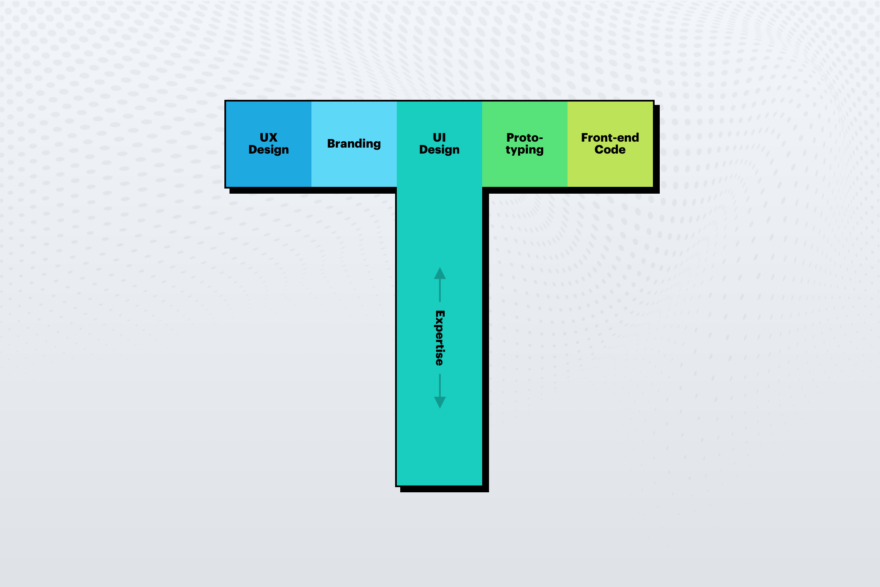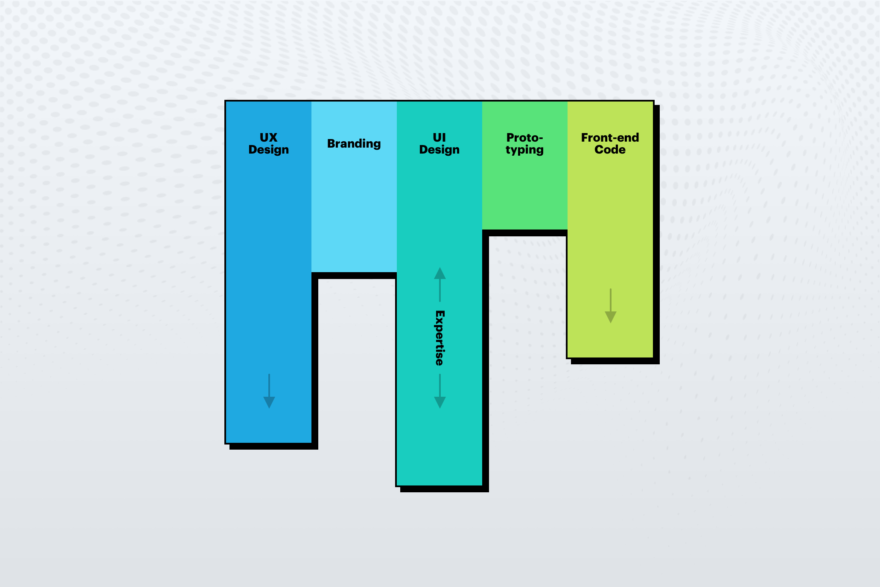The digital industry makes design jobs increasingly sought after to meet the visual needs of businesses every day. As a result, it becomes a challenge for designers to improve their skills in many aspects. Not only for creating logos or designing social media content but also for accommodating more general things such as branding, motion graphics, and UI/UX design. These differences label two types of designer abilities: The generalist and the specialist.
Difference between designer generalist and specialist
These two types ultimately raise a question. Which one is better? To find out the answer, let’s review more one by one!
- Generalist:
The generalist is considered a “jack of all trades, a master of none”. The various skills that generalist designers have can make them more flexible in developing their careers over time. However, the many design skills they learned made their abilities, not at a profound level. Generalists make good team players because their vast experience helps them work across boundaries, but they’ll have a hard time tackling them when encountering tough jobs that require deep expertise.
- Specialist:
He is an expert in his field. Unique work experience and diligent training allow them to understand their work in depth. As a result, even though they may only be experts in one field, they can handle it quickly and calmly when the most challenging work surfaces. On the downside, the narrow area of specialists makes them inflexible in some jobs. They may find it more difficult to collaborate because they lack understanding of the challenges of their team members.
Do we have to choose?
NO. You don’t have to choose to be a generalist or a specialist designer. Because one of the two is not enough. A mixture of both will make you valuable as a collaborative and flexible designer who knows a lot, especially if you want to be a successful designer in this modern era.
There will be more and more demands on creativity and efficiency from the team. What’s more, artificial intelligence can change the design process. In a few years, the design process may no longer be the same, given today’s rapid technological advances.
In short, designers need specialist expertise with broad and generalist collaborative skills. Anything less than that, things won’t be good enough!
What T-shape of the designer be like?
According to Tim Brown, CEO of Ideo, The concept of a specialist generalist can be analogous to a T-shape. When we look at the letter T: The vertical line is the skill you are studying, while the horizontal line is another supporting skill.

If you can master other skills more deeply, your T-shape will look like an M-shape.

So, what makes the designer’s T-shape so great? Empathy!
Refers to empathy with the users of your design. You need to have a different kind of empathy: an understanding of the language and challenges of your collaborators and stakeholders. It is empathy across your horizontal T axis.
Becoming a specialized generalist designer is the right answer
If you are a generalist designer who has many design skills but lacks depth, you can highlight your value by choosing one or two skills to focus on. If you are a specialist who only masters one field in-depth, try learning new things that complement the skills in your industry. Being a designer who is both a generalist and a specialist can always be done by deliberately stepping out of your comfort zone to deepen and learn new things.


